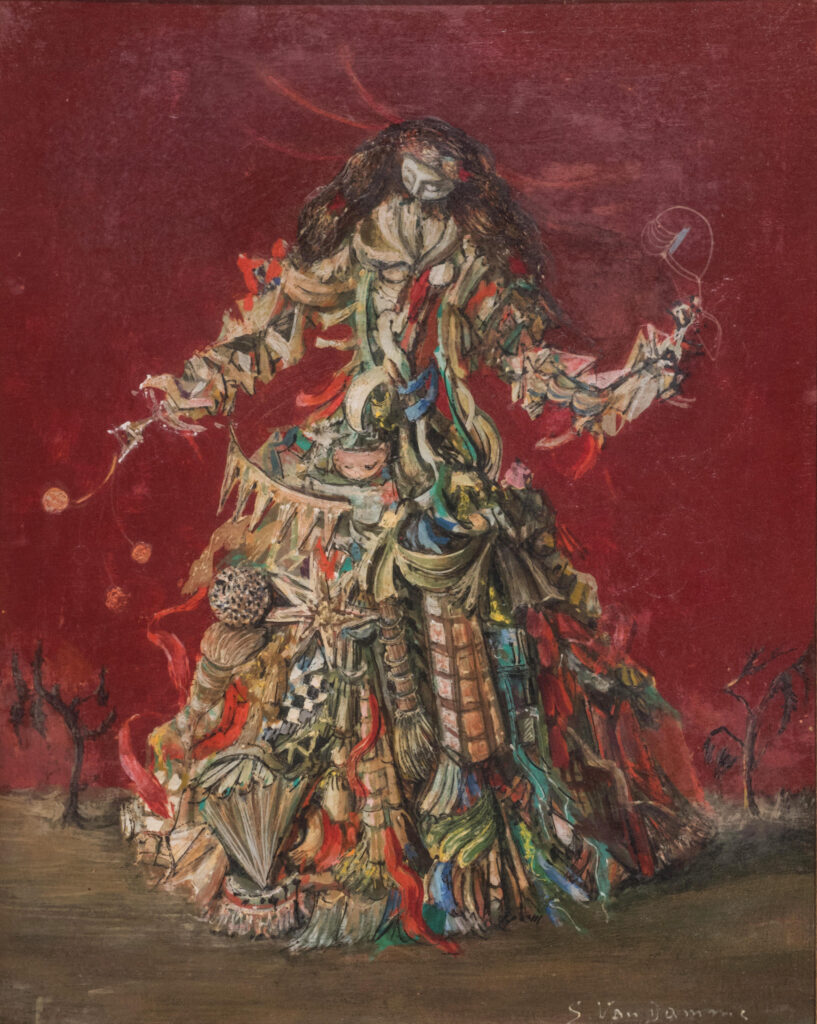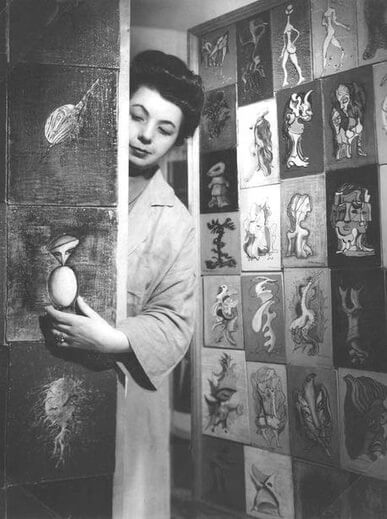Your currently viewing RAW Modern | Switch to RAW Contemporary
'Femme Surréaliste',
Catalogue essay by Blanche Llewellyn
Despite being born in Belgium, arguably the birthplace of Surrealism, Suzanne Van Damme only began creating identifiably surrealist artworks when she relocated to Paris in the 1930s.
By the late 1940s, the period to which this picture most likely dates, she was at the height of her recognition. In 1947, André Breton, the so-called “Father of surrealism”, extended an invitation to Van Damme to participate in the renowned “Exposition Internationale du Surréalisme” at Galerie Maeght in Paris. This exhibition featured a prestigious lineup of famous contemporaries including Arp, Bellmer, Brauner, Calder, Duchamp, Ernst, Giacometti, Gorky, Lam, Matta, Miro, Picabia, Man Ray, Tanguy, Tanning, and numerous others.
Although Suzanne Van Damme’s remarkable work contributed to advocating for gender parity in the male-dominated realm of surrealist art – like many significant women painters of the movement, both during her lifetime and thereafter, the struggle for recognition continues; this painting, like numerous others by the artist, lacks a date or title, leaving its origins and significance shrouded in mystery.
The surrealist, nearly mythological female figure, appears to loom over the viewer due to her distorted height , with her form composed of a mixture of seemingly random and undefined objects, including elements resembling a doll, a broom, and pieces of cloth. Her pale, ghostly face contrasts sharply with the vibrant colors surrounding her, hinting at themes of mortality and transience. The deep burgundy background, reminiscent of the color of blood, intensifies the unsettling atmosphere of the piece. Additionally, the inclusion of miniature dead trees in the background further contributes to this apocalyptic image, evoking a sense of impending doom or desolation.
Regardless of the disturbing and confusing imagery, Suzanne Van Damme achieves an overall harmony in her work by skillfully blending disparate elements into a cohesive whole.

